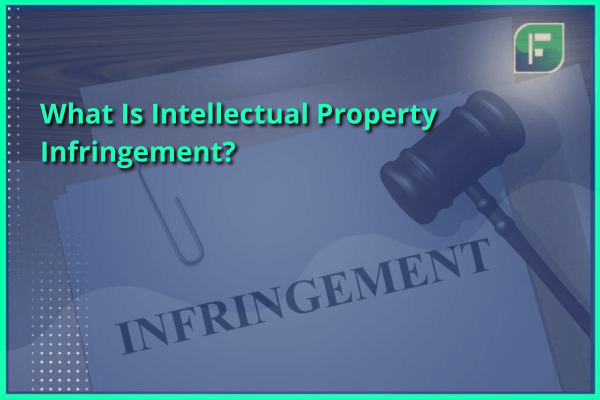Intellectual property infringement refers to actions that violate or undermine the rights associated with intellectual property. Sometimes, this occurs accidentally, without intent, whereas in other times, it is mostly deliberate for which there can be serious penalty and consequences. In this blog, we shall understand what is intellectual property rights infringement and what are the ways in which it can be prevented.
Understanding Intellectual Property
Intellectual property registration comprises intangible assets, indicating they lack physical presence and cannot be held. These assets are products of human intellect, encompassing various forms such as artwork, symbols, logos, brand names, and designs, among others.
In today’s knowledge-based economy, companies place significant emphasis on recognising and safeguarding intellectual property due to its considerable value. Creating valuable intellectual property demands substantial investments in expertise and time. This results in significant investments by organisations and individuals, which should not be exploited without proper authorisation.
Utilising the value from intellectual property while preventing unauthorised exploitation is a crucial responsibility for any company. Despite its intangible nature, intellectual property often holds greater value than a company’s physical assets. It serves as a potential competitive advantage and is fiercely protected by the owning companies.
Understanding Intellectual Property Infringement
Intellectual property rights infringement refers to the unauthorised use of protected intellectual assets, presenting a significant legal concern. Mentioned below are specific categories of intellectual property rights infringement:
1. Patent Infringement
Patent infringement involves using, making, selling, or importing a product or process protected by a valid patent registration without the owner’s permission. This could include replicating a patented invention or producing a similar product without proper authorisation from the owner of the said patent.
2. Trademark Infringement
Trademark infringement arises when an entity utilises a trademark registration resembling a registered trademark for similar goods or services without the owner’s consent. This could encompass using a comparable logo, name, or generating products that may cause confusion among consumers about the goods that are under trademark protection and other goods.
3. Copyright Infringement
Copyright infringement includes the replication, distribution, exhibition, or presentation of copyrighted works without the copyright registration owner’s permission. This involves copying books, music, films, employing photographs, or disseminating copyrighted content online without proper authorisation of thw owner.
4. Trade Secret Infringement
Trade secret infringement pertains to the unauthorised use or disclosure of a trade secret registration, which is confidential information that provides a competitive advantage. Trade secrets may encompass items such as customer lists, manufacturing processes, or formulas. This infringement can occur through actions like stealing trade secrets, revealing confidential information to competitors, etc.
Consequences of Intellectual Property Infringement
Intellectual property infringement carries various serious consequences affecting both the infringing party and the rightful owner. Mentioned below are the detailed implications of intellectual property infringement:
1. Legal Actions and Lawsuits:
Intellectual property owners often resort to legal measures by initiating lawsuits against the infringing parties. These legal procedures can be costly and time-consuming for both parties involved. Also, under legal actions, injunctions may be imposed, legally prohibiting the infringing activities.
2. Fines and Monetary Penalties:
Proven infringement may lead to fines and monetary compensations to the intellectual property owner. Damages can include profits gained from the infringement, alongside the actual damages suffered by the owner of the intellectual property.
3. Lost Profits:
Infringement causes financial loss to the intellectual property owner as their exclusive rights are violated. The infringing party may be liable for compensating these lost profits.
4. Reputation Damage:
Both the infringing party and the owner face reputational harm. The infringing party may be perceived as unethical, while the owner’s brand integrity may suffer.
5. Criminal Penalties:
Severe cases of infringement can lead to criminal charges, especially in large-scale piracy or counterfeiting operations, potentially resulting in imprisonment.
6. Seizure and Destruction:
Courts can order the removal and destruction of infringing products or materials, preventing further damage to the owner’s rights.
7. Injunctions:
Court-issued injunctions can halt the production, distribution, or sale of infringing products or materials.
8. Exposure to Third-Party Claims:
Parties engaging in infringement might encounter claims from third parties, including distributors or retailers, who relied on the validity of the intellectual property rights.
Preventing Intellectual Property Infringement
The steps should be taken by businesses and individuals. These measures may include:
1. Intellectual Property Registration:
Register patents, trademarks, and copyrights to establish legal proof of ownership and exclusive rights.
2. Confidentiality Measures:
Safeguard trade secrets and confidential information to prevent unauthorised disclosure.
3. Monitoring and Enforcement:
Continuously observe the marketplace for potential infringements and take swift action to enforce intellectual property rights upon identifying violations.
4. Education and Training:
Ensure that employees and associates understand intellectual property laws and their responsibility in protecting these rights.
5. Contracts and Agreements:
Employ contracts, licences, and agreements to specify terms and conditions for the use of intellectual property.
By proactively safeguarding intellectual property and comprehending the potential repercussions of infringement, businesses and individuals can diminish risks and preserve the integrity of their creative and innovative works. Additionally, issuing cease and desist notices to infringing parties can effectively demand the cessation of their unauthorised activities.
Final Thoughts
Preventing intellectual property infringement is vital in the Indian commercial sector. This involves measures such as registration, confidentiality protection, consistent monitoring, educating stakeholders, and implementing contracts along with cease and desist notices. Understanding the potential consequences of infringement and taking proactive steps to safeguard intellectual property rights is vital for maintaining the integrity of innovative and creative works in today’s highly competitive and digital environment.






